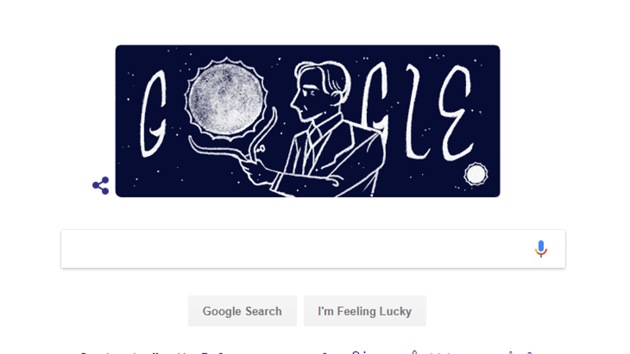Google honours astrophysicist Subrahmanyan Chandrasekhar with doodle
Google on Thursday marked the 107th birth anniversary of Subrahmanyan Chandrasekhar, the first astrophysicist to have won a Nobel Prize for his theory on the evolution of stars
Google on Thursday marked the 107th birth anniversary of Subrahmanyan Chandrasekhar, the first astrophysicist to have won a Nobel Prize for his theory on the evolution of stars, with a Doodle.

The Indian-American astrophysicist, known for his theory of white dwarfs, was born on October 19, 1910, to a Tamil family in Lahore (now in Pakistan).
He is also the nephew of Indian physicist C.V. Raman, who won the Nobel Prize in 1930 for his work in the field of light scattering.
Chandrasekhar studied in the Presidency College, Madras, and later in Cambridge University before moving to the US in 1936, where he joined as faculty at the University of Chicago, a position he retained until his death.
He was awarded the Nobel Prize for his theoretical studies of the physical processes important to the structure and evolution of stars in 1983.
While working as a researcher at the University of Cambridge, he developed a theory which came to be known as the “Chandrasekhar Limit”, which determined that not all stars would become unstable and collapse in on themselves to turn into white dwarfs.
According to the theory, the mass of a white dwarf could not exceed 1.44 times that of the Sun. After the limit, the force of gravity would cause the white dwarf to collapse.
Some of the most massive stars explode into a supernova and then collapse down into neutron stars, or black holes.
Before Chandrasekhar, scientists had assumed that all stars collapse into white dwarfs when they die.
Chandrasekhar was a popular teacher who guided over 50 students to their PhDs. He was also a prolific writer who wrote 10 books, including one on the relationship between art and science.
In his honour, the US space agency NASA named its premier X-ray observatory as the Chandra X-ray Observatory.
Chandrasekhar passed away in 1995.



